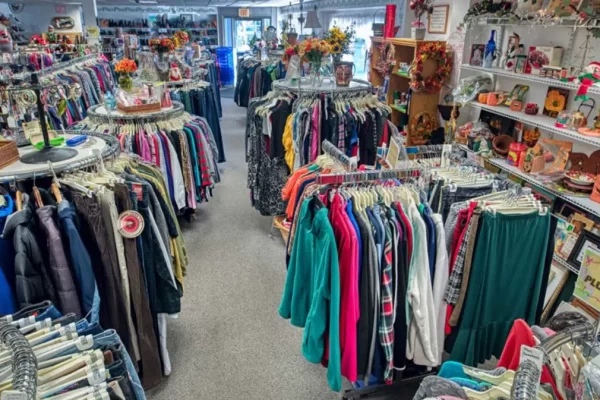The 20th century can be broken down into capitalism and consumerism, and overwhelming times in history led to an increase in buying and using products and services as a way to please a specific need or want, which took a turn when people could afford TVs and mobile phones, where advertisements changed how they see life. Promotions were made to create a perfect image of the customer if they owned a particular object or did a specific thing to care for
themselves, which is a perpetuating strategy even in modern days.
However, after seeing the effects of consumerism on the planet, where tons of products end up in landfills, affecting nature, younger generations are starting to put the brakes on spending and mitigate sustainability in an effort to slow down climate change.
The main idea of this emergence is that less is more, and buying qualitative products, along with those made of green material, might slow down the speed at which people purchase things they need and, therefore, contribute to a better environment. Here’s why.
Buying green ―options, benefits and challenges
Purchasing green products is among the latest controversies in the business world. That’s because it appeals to a specific target audience and has profit potential; it’s also prone to greenwashing, which is an illicit approach to gaining customers.
Sustainable products are meant to approach manufacturing things from materials that don’t harm the environment as plastic does. Another example is the continuous deforestation of paper and derived products, slowly destroying our habitats. Of course, options like seeded paper are convenient since they can be reused for both marketing purposes and then planted in nature for the regrowth of woods.
Buying green can reduce the negative impact on the environment by addressing social issues and saving money with an extended product life. However, the system is challenged by the lack of data acquired and little support from governments and corporations.
Buying less ― and the rise of minimalism
Many people approached minimalism to cut their spending and buy fewer products instead of materials and overconsumption. While this strategy is appreciated more in architecture, it has now become a lifestyle for many people globally, who value owning as few things as possible but of high quality. They might include or are not sustainable products, but many green products are very resistant, like the ones on https://www.greengiving.eu/.
Minimalism contributes considerably to less useless purchasing, but it also helps people be more mindful of their lives because the mindset behind the practice encourages the idea that having less stuff means less stress, which is a serious problem for the modern individual. By making fewer choices of products that only fuel out happiness for a few moments, people can simply focus their well-being on other aspects of their lives, such as health or spending time with loved ones.
Of course, not everyone is a fan of consumerism because, for many, this is a restricting method of saving the planet. It opposes capitalism drastically, which, for some people, is the worst. After all, the doomed economy hinders people from becoming owners like previous generations did, so why not spend it all if, in the end, all that money is for no use?
Finding a balance between what’s useful and being happy
There’s a fine line between intervening in valuable and qualitative products and simply finding joy in life. We’re bombarded with ads for services and objects that will indeed make us feel better, but not permanently. Unfortunately, this part of the economy hit us right in our feelings, so understanding the psychology of the modern man will help us mitigate needs and wants.
Still, it’s not easy to make amends with yourself and simply say no to something you can buy. While it might not be valuable in the long term, that simple object can make you go through the day without being reminded of the world’s catastrophes, massive bills and the inability to own a stable place.
Luckily, the stigma for going to therapy is slowly fading away, and people can work on themselves and understand where these desires of buying everything come from. Therefore, all the fuss from the beginning of the 20th century will be long gone because previous generations had a different understanding of their impact and less access to global knowledge.
At the end of the day, force is not the answer
Many mitigators (and instigators, too) seem to force the population to buy green products or shame them for being the victims of capitalism. This approach doesn’t seem to work because human emotions are much more complex. At the same time, some individuals forget that companies produce in mass, and their impact on the environment is much more damaging since they’re secretly using dangerous materials and substances that help them continue operational activities.
The shift from buying too much or purchasing only what’s necessary, as an effort to mitigate sustainability, is a considerable challenge and can’t be tackled in such a manner. However, experts warn us that if we don’t hurry up climate change strategies, the planet might get hotter faster than forecasted, leading to lost vegetation, wildlife, and even human life.
Hence, a strategic approach must be taken into consideration by both sides in such a way that it respects professional opinions and eco-friendly concerns. There are many economic, legal, social and psychological implications in handling consumerism against sustainability, so the discussion will always continue. At least until a fierce group of people will take responsibility and, along with worldwide governments, will address them.
What’s your take on consumerism and sustainability?
Is it true that less is more, or is this a greenwashing technique? The answer is not that easy to find, but what’s sure is the planet is affected by the massive amounts of trash thrown out in the oceans and lands. The issues can be traced back to corporations that mass-produce, but also consumers, whose attitude toward purchasing has altered after the beginnings of consumerism in the 20th century.





